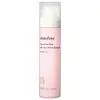What's inside
What's inside
 Key Ingredients
Key Ingredients

 Benefits
Benefits

 Concerns
Concerns

 Ingredients Side-by-side
Ingredients Side-by-side

Water
Skin ConditioningPropanediol
SolventNiacinamide
SmoothingGlycerin
Humectant1,2-Hexanediol
Skin ConditioningBetaine
HumectantPPG-13-Decyltetradeceth-24
EmulsifyingAmmonium Acryloyldimethyltaurate/Vp Copolymer
Butylene Glycol
HumectantGlyceryl Caprylate
EmollientDisodium EDTA
Ethylhexylglycerin
Skin ConditioningCetearyl Alcohol
EmollientParfum
MaskingPolyglyceryl-3 Methylglucose Distearate
EmulsifyingPrunus Yedoensis Leaf Extract
Skin ConditioningHydrogenated Lecithin
EmulsifyingGlyceryl Stearate Citrate
EmollientAcrylates/Stearyl Methacrylate Copolymer
Emulsion StabilisingTremella Fuciformis Sporocarp Extract
AntioxidantHyaluronic Acid
HumectantXanthan Gum
EmulsifyingCeramide NP
Skin ConditioningTocopherol
AntioxidantWater, Propanediol, Niacinamide, Glycerin, 1,2-Hexanediol, Betaine, PPG-13-Decyltetradeceth-24, Ammonium Acryloyldimethyltaurate/Vp Copolymer, Butylene Glycol, Glyceryl Caprylate, Disodium EDTA, Ethylhexylglycerin, Cetearyl Alcohol, Parfum, Polyglyceryl-3 Methylglucose Distearate, Prunus Yedoensis Leaf Extract, Hydrogenated Lecithin, Glyceryl Stearate Citrate, Acrylates/Stearyl Methacrylate Copolymer, Tremella Fuciformis Sporocarp Extract, Hyaluronic Acid, Xanthan Gum, Ceramide NP, Tocopherol
Citrullus Lanatus Fruit Extract
Skin ConditioningCitrullus Lanatus Seed Oil
EmollientOryza Sativa Germ Oil
EmollientMoringa Oleifera Seed Extract
Skin ConditioningGlycine Soja Sterols
EmollientOryza Sativa Germ Extract
EmollientCucurbita Pepo Seed Oil
EmollientLithospermum Erythrorhizon Root Extract
Skin ConditioningAlkanna Tinctoria Root Extract
Skin ConditioningHyaluronic Acid
HumectantSoy Amino Acids
Skin ConditioningFructooligosaccharides
HumectantCentella Asiatica Extract
CleansingHibiscus Sabdariffa Flower Extract
Skin ConditioningNatto Gum
Vinegar
Sorbitan Oleate
EmulsifyingScutellaria Baicalensis Root Extract
AstringentPaeonia Suffruticosa Root Extract
Skin ProtectingGlycyrrhiza Glabra Root Extract
BleachingBeta-Glucan
Skin ConditioningBrassica Oleracea Capitata Leaf Extract
Skin ConditioningIpomoea Batatas Root Extract
Skin ConditioningParfum
MaskingCitrullus Lanatus Fruit Extract, Citrullus Lanatus Seed Oil, Oryza Sativa Germ Oil, Moringa Oleifera Seed Extract, Glycine Soja Sterols, Oryza Sativa Germ Extract, Cucurbita Pepo Seed Oil, Lithospermum Erythrorhizon Root Extract, Alkanna Tinctoria Root Extract, Hyaluronic Acid, Soy Amino Acids, Fructooligosaccharides, Centella Asiatica Extract, Hibiscus Sabdariffa Flower Extract, Natto Gum, Vinegar, Sorbitan Oleate, Scutellaria Baicalensis Root Extract, Paeonia Suffruticosa Root Extract, Glycyrrhiza Glabra Root Extract, Beta-Glucan, Brassica Oleracea Capitata Leaf Extract, Ipomoea Batatas Root Extract, Parfum
 Reviews
Reviews

Alternatives
Ingredients Explained
These ingredients are found in both products.
Ingredients higher up in an ingredient list are typically present in a larger amount.
Hyaluronic acid is naturally found in healthy skin. It is a humectant, meaning it draws moisture to your skin.
This ingredient helps hydrate, soothe, and protect the skin.
What makes hyaluronic acid so hydrating? It has the capacity to bind or hold large amounts of water.
Fun fact: It is already naturally found in our bodies, such as the fluids of our eyes and our joints.
Studies find this ingredient to have anti-inflammatory and anti-microbial properties. This can help speed up wound-healing.
Hyaluronic acid can be irritating if the molecule has a low-molecular weight, or if the molecules are small.
One study found low-molecular weight hyaluronic acid to be pro-inflammatory, meaning some people may experience irritation. This is because our bodies use hyaluronic acid in the wound-healing process to signal to our bodies, via irritation, that something needs healing.
The same study found high-molecular weight hyaluronic acid to be anti-inflammatory.
These are some other common types of Hyaluronic Acid:
Learn more about Hyaluronic AcidParfum is a catch-all term for an ingredient or more that is used to give a scent to products.
Also called "fragrance", this ingredient can be a blend of hundreds of chemicals or plant oils. This means every product with "fragrance" or "parfum" in the ingredients list is a different mixture.
For instance, Habanolide is a proprietary trade name for a specific aroma chemical. When used as a fragrance ingredient in cosmetics, most aroma chemicals fall under the broad labeling category of “FRAGRANCE” or “PARFUM” according to EU and US regulations.
The term 'parfum' or 'fragrance' is not regulated in many countries. In many cases, it is up to the brand to define this term.
For instance, many brands choose to label themselves as "fragrance-free" because they are not using synthetic fragrances. However, their products may still contain ingredients such as essential oils that are considered a fragrance by INCI standards.
One example is Calendula flower extract. Calendula is an essential oil that still imparts a scent or 'fragrance'.
Depending on the blend, the ingredients in the mixture can cause allergies and sensitivities on the skin. Some ingredients that are known EU allergens include linalool and citronellol.
Parfum can also be used to mask or cover an unpleasant scent.
The bottom line is: not all fragrances/parfum/ingredients are created equally. If you are worried about fragrances, we recommend taking a closer look at an ingredient. And of course, we always recommend speaking with a professional.
Learn more about Parfum